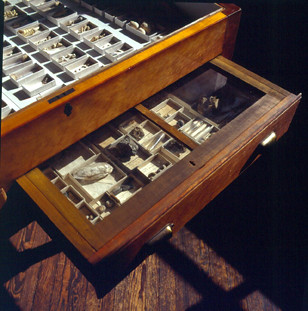Donald G. MacVicar Jr., 21-year-old Amherst senior and chemistry major, got the idea in a college bull session. After he tested it in the laboratory, MacVicar decided he had the answer to a problem that has long puzzled professional paleontologists: how to separate certain delicate, prehistoric fossils from the limestone in which they are embedded.
The most commonly used methods for freeing fossils are risky. Acid, for instance, dissolves limestone, but it also destroys many types of fossils. Some grades of stone can be scaled away with the flame of a blow torch, but this method is limited and difficult. Other stones, heated and then dipped in cold water, sometimes crack away from the fossils they contain. Too often, the rapid change of temperature shatters the fossil as well as the stone.
MacVicar's idea: if limestone containing fossils were heated to sufficiently high temperatures (about 1,800deg Centigrade), the soft stone would burn to powder; at the same time, numerous phosphate-coated fossils, which are less sensitive to heat than the limestone, should remain intact.
MacVicar put his theory to the test, using the Amherst chemistry lab's electric furnace. On the second try, he succeeded. Impressed, Geology Professor George W. Bain handed MacVicar his favorite specimen, a chunk of pre-Cambrian limestone from the great Shinkolobwe mine in the Belgian Congo, world's largest supply of uranium. After slowly heating the stone to 1,800deg C. and letting it cool slowly, MacVicar painstakingly brushed away the powdered lime and uncovered the fragile, microscopic remains of a billion-year-old sponge. Dr. Bain described it as "among the oldest [fossils] yet discovered."
Scientists pointed out that the simple MacVicar treatment is limited to limestone (other stones, with different mineral compositions, do not turn to powder even in extreme temperatures) and to certain types of fossils. But there is little doubt that student MacVicar has developed a valuable new trick for paleontologists.
Source Citation
"How to Free Fossils.(Science)." Time 30 Apr. 1951: 85. Academic OneFile. Web. 4 Jan. 2010.
Gale Document Number:A197128862



No comments:
Post a Comment